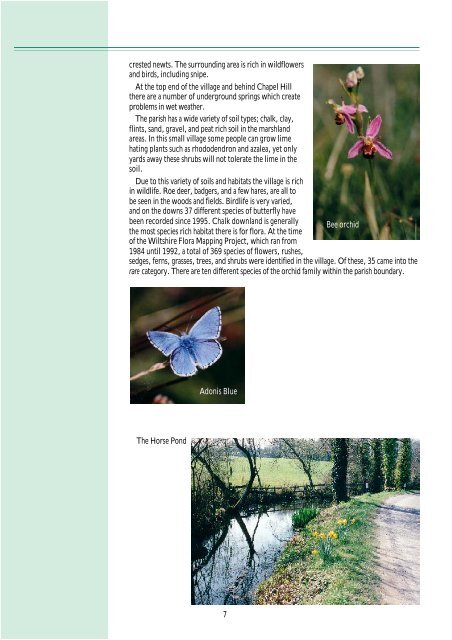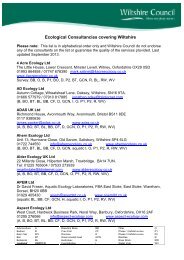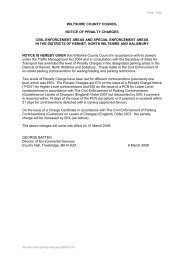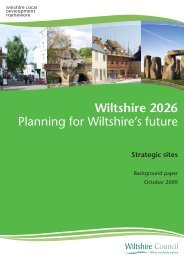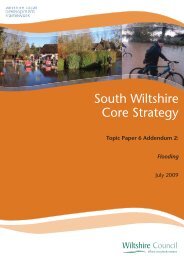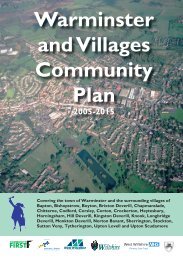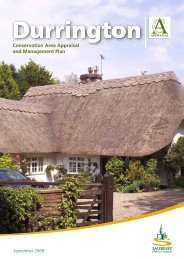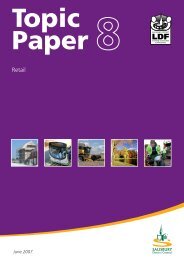(Adopted September 2005) 3mb - Wiltshire Council
(Adopted September 2005) 3mb - Wiltshire Council
(Adopted September 2005) 3mb - Wiltshire Council
- No tags were found...
You also want an ePaper? Increase the reach of your titles
YUMPU automatically turns print PDFs into web optimized ePapers that Google loves.
crested newts. The surrounding area is rich in wildflowersand birds, including snipe.At the top end of the village and behind Chapel Hillthere are a number of underground springs which createproblems in wet weather.The parish has a wide variety of soil types; chalk, clay,flints, sand, gravel, and peat rich soil in the marshlandareas. In this small village some people can grow limehating plants such as rhododendron and azalea, yet onlyyards away these shrubs will not tolerate the lime in thesoil.Due to this variety of soils and habitats the village is richin wildlife. Roe deer, badgers, and a few hares, are all tobe seen in the woods and fields. Birdlife is very varied,and on the downs 37 different species of butterfly havebeen recorded since 1995. Chalk downland is generallyBee orchidthe most species rich habitat there is for flora. At the timeof the <strong>Wiltshire</strong> Flora Mapping Project, which ran from1984 until 1992, a total of 369 species of flowers, rushes,sedges, ferns, grasses, trees, and shrubs were identified in the village. Of these, 35 came into therare category. There are ten different species of the orchid family within the parish boundary.Adonis BlueThe Horse Pond7 7


